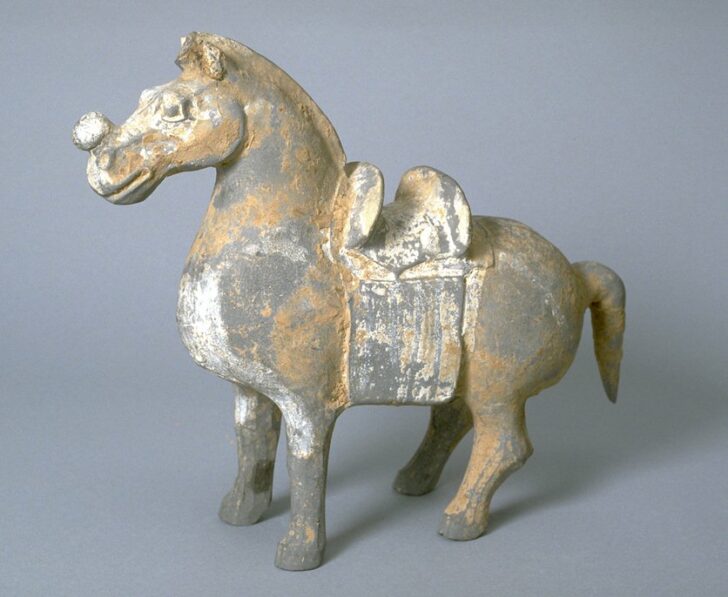Horse
Chinese

Description
Subject Matter:
An earthenware mingqi (明器), or "bright object", figure of a caparisoned horse of the Western Jin Dynasty (265-316). The projecting roundel on the nose of this horse is only seen during the Western Jin dynasty, while the strong features and modeling style are typical of Henan workshops. Horses were commonly placed in tombs to provide transportation for the deceased in the afterlife, and are usually indicative of the occupant's wealth and status.
Since the Qin dynasty (221-206 BCE), ceramic figures have been used to replace human sacrifice in burial practices as mingqi (明器) or grave goods, as a way to provide for the deceased. Mingqi could include houses, towers, gates, granaries, livestock pens, chicken coops, wells, cooking stoves, storage vessels, dishes, incense burners, and lamps. Figures could include horses, dogs, anthropomorphic animals and people, such as officials, guardians, servants, and entertainers. By the Han dynasty, they also included representations of common people engaged in the activities that consumed their daily lives, such a cooking. As grave goods, these mingqi included everything one would need to ensure a comfortable transition into the afterlife. The number of ceramic mingqi items in a tomb could reach numbers of a few to several hundred objects.
Physical Description:
An earthenware model of a stocky horse on short legs, dressed in a saddle blanket and saddle with a roundel on its nose, a short downward pointing tail and trimmed mane, and traces of mineral pigment.
Usage Rights:
If you are interested in using an image for a publication, please visit https://umma.umich.edu/request-image/ for more information and to fill out the online Image Rights and Reproductions Request Form.